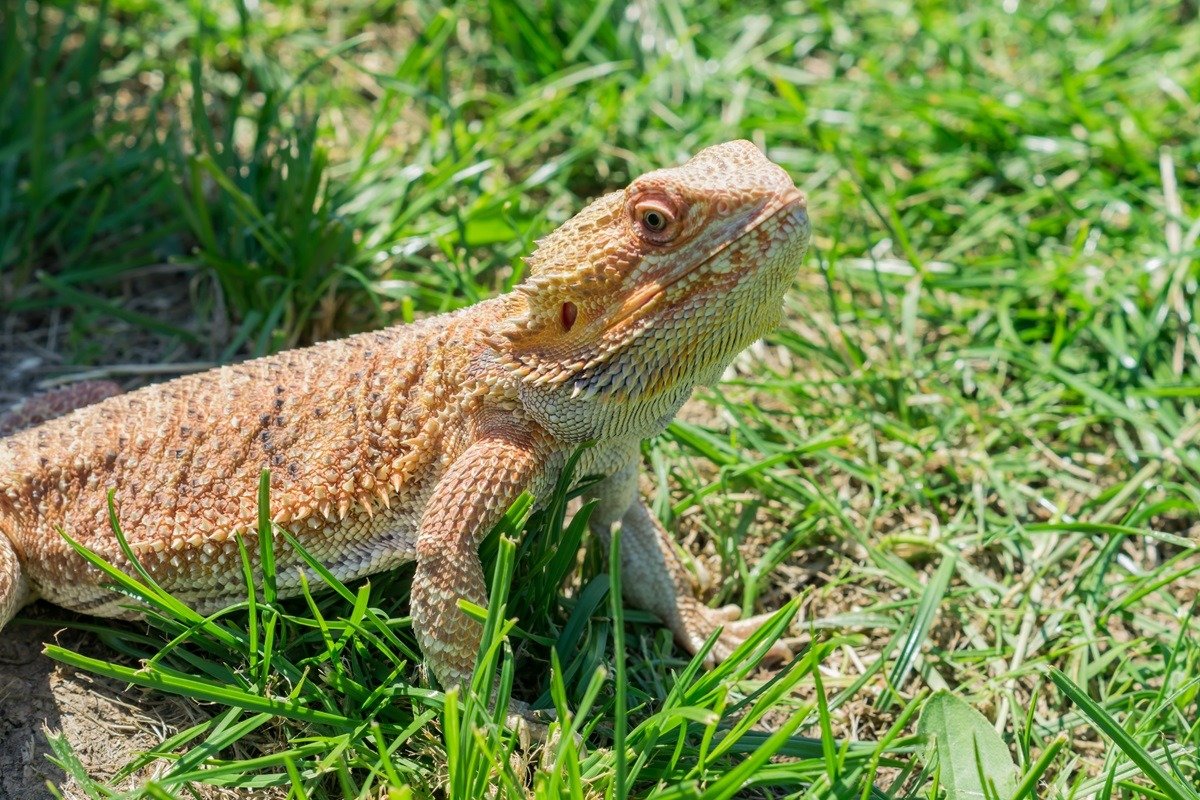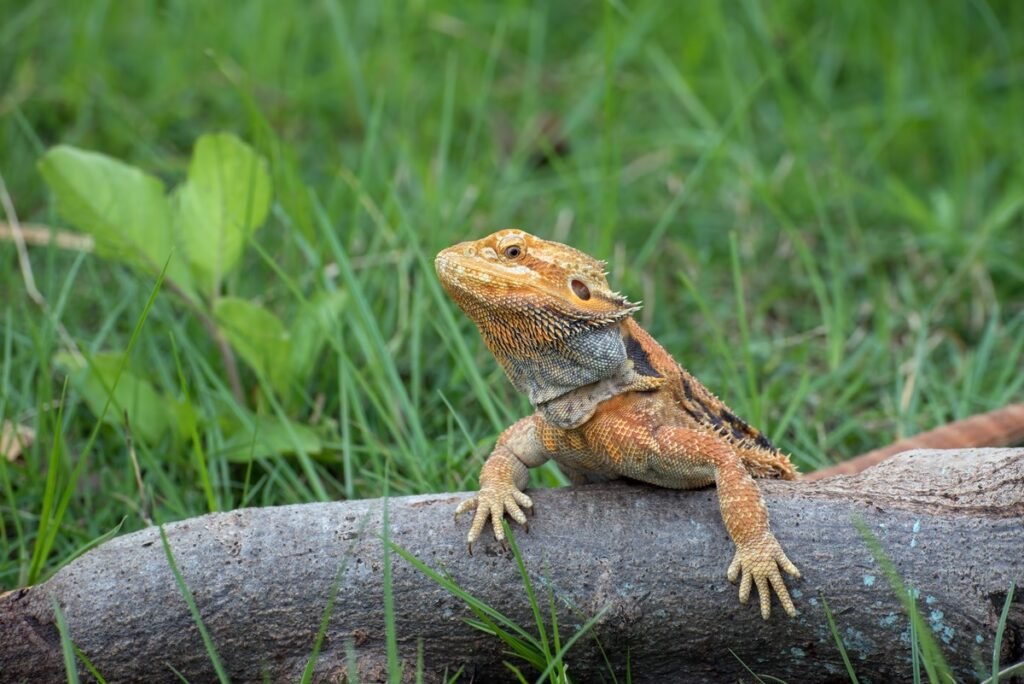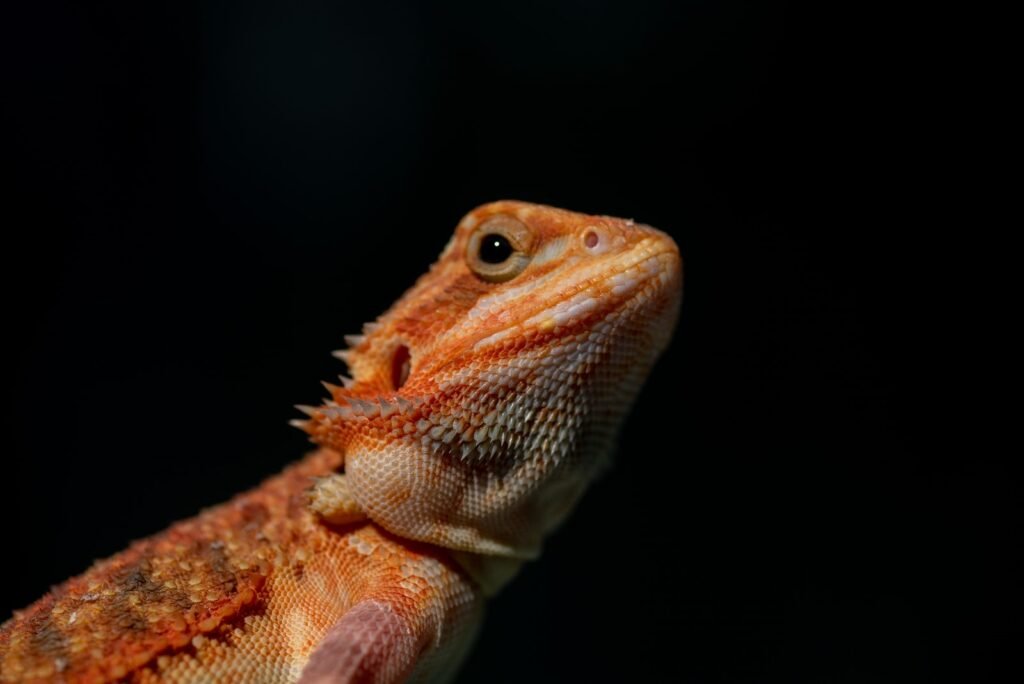Traveling with a bearded dragon requires a little extra preparation. But don’t let that deter you! With the right knowledge and tips, you can ensure your scaly friend has a safe and enjoyable journey. This guide will walk you through everything you need to know, from choosing the perfect carrier to managing their needs on the road.
Is My Bearded Dragon Ready to Travel?
Traveling can be an exciting experience, but not every bearded dragon is automatically a good travel companion. Before embarking on a big adventure, consider these factors:
Short Trips First
👍Test the Waters: Start with short car rides or outings around your neighborhood. This helps you gauge how your beardie handles being in a carrier and unfamiliar environments.
👍Positive Reinforcement: Offer treats and praise during these practice runs to create positive associations with travel.
Health Checkup
💚Vet Visit: It’s wise to schedule a checkup before any major trip. This ensures your bearded dragon is healthy enough to handle potential travel-related stress.
💚Address Existing Issues: If your beardie has any ongoing health problems, discuss with your vet whether travel is advisable and how to manage their care on the road.
Temperament
🔹Assess Your Beardie’s Personality: Are they generally calm and adaptable, or easily startled? Anxious dragons might find travel particularly stressful.
🔹Signs of Discomfort: Notice how your bearded dragon reacts to changes in routine or being handled. Excessive stress might indicate travel would be difficult.
🔹Alternatives: If your beardie seems ill-suited to travel, consider options like boarding them with a knowledgeable reptile sitter or having a trusted friend or family member care for them while you’re away.
Important Considerations
❗Age and Health: Young or very old bearded dragons, or those with health conditions, might be more vulnerable to travel-related stress.
❗Trip Length: Short trips are generally less taxing than long, multi-day journeys.
Travel Setup Essentials: Packing for Comfort and Safety

A well-prepared travel setup is vital for your bearded dragon’s comfort and well-being during your journey. Here’s a breakdown of the essential items and how to set things up for a stress-free experience:
Carrier Choice
👉Size Matters: Choose a carrier that provides enough space for your bearded dragon to turn around comfortably and stand upright. It shouldn’t be so large that they feel exposed or insecure. Measure your beardie beforehand to ensure a good fit.
👉Material Matters: Opt for sturdy, well-ventilated carriers specifically designed for reptiles. Look for materials like plastic or fabric with secure mesh panels or air holes to allow proper airflow and prevent overheating.
👉Safety First: Select a carrier with secure latches or zippers that won’t accidentally open during travel. A comfortable handle or strap for easy transport is an added bonus.
Inside the Carrier: Creating a Familiar Haven
🔹Substrate Essentials: Line the bottom of the carrier with a familiar, absorbent substrate like paper towels or a travel-sized reptile carpet. Avoid loose substrates that could be inhaled or irritate your beardie’s eyes.
🔹The Comfort of a Hide: Provide a small hide box or a secure, soft pouch where your beardie can retreat for comfort and privacy if they feel stressed during travel.
🔹Temperature Control Solutions: Maintaining a safe temperature range inside the carrier is crucial. Depending on the weather and duration of your trip, you may need:
- Hot Weather Considerations: Include reptile-safe cooling packs or frozen water bottles wrapped in towels to provide a cool spot for your beardie.
- Cold Weather Considerations: Use insulated carriers and consider adding hand warmers or a small, secure hot water bottle wrapped in a towel to maintain warmth.
🔹Temperature Monitoring is Key: Invest in a travel-sized digital thermometer to keep a close eye on the temperature inside the carrier throughout your journey.
Supply Checklist
Packing the right supplies ensures you’re well-equipped to handle any situation on the road. Here’s a list of essentials:
✔️Food & Water for the Journey: While you might not need to pack their entire food supply, bring enough of their regular food for the estimated travel duration, with a slight buffer in case of unforeseen delays. Pack a separate, leak-proof travel water dish and fill it fresh before departure.
✔️Portable First-Aid Kit: Assemble a small first-aid kit specifically for reptiles. Consult your veterinarian for recommendations on what to include, but common items might be sterile gauze pads, antiseptic wipes, and a reptile-safe wound ointment.
✔️Hygiene on the Go: Pack paper towels and hand sanitizer for quick cleanups during your trip.
✔️Comforting Familiarity: Include a small familiar blanket or toy with your beardie’s scent to provide a sense of comfort and security during travel.
✔️Optional Outdoor Exploration: If you plan on allowing your bearded dragon supervised outdoor time at a secure destination, having a leash and harness on hand is a good idea.
Additional Tips for a Smooth Journey
- Carrier Acclimation: Introduce your bearded dragon to their travel carrier a few days before the trip. Let them explore it at their own pace, and offer treats or praise to create positive associations.
- Minimize Movement: Secure the carrier safely during car trips to prevent excessive bouncing or sliding, which can be stressful for your beardie.
By carefully considering these essentials and setting up their travel environment thoughtfully, you’ll be well on your way to ensuring a comfortable and safe journey for your bearded dragon companion!
On the Road (or in the Air): Managing Your Bearded Dragon’s Journey
The mode of transport you choose will dictate some specific considerations for keeping your beardie safe and comfortable. Let’s delve deeper into the most common scenarios:
🚗Car Travel
Temperature Control is Critical: Maintaining an ideal temperature range inside the carrier is your top priority. Here’s how to handle various situations:
Hot Weather: Park in shaded areas when taking breaks. Use reptile-safe cooling packs or a frozen water bottle wrapped in towels to provide a cooler zone within the carrier. NEVER leave your beardie in a car unattended, as temperatures can rise dangerously fast.
Cold Weather: Insulate the carrier with blankets or towels. Hand warmers carefully placed beneath the carrier (never in direct contact with your beardie) can provide gentle warmth. Pre-warm the car before placing them inside.
Secure Placement: Find the safest, most stable spot in your vehicle for the carrier. Consider:
Seatbelts: Thread the seatbelt through the carrier handle or use car seat buckles designed for pet carriers to secure it in place.
Footwells: In some cases, placing the carrier in a secure footwell might be more stable than on a seat.
Avoid Trunks: These areas often lack proper ventilation and temperature control.
Minimize Bumps and Stress: Opt for the smoothest route possible, avoiding roads with excessive potholes or frequent, abrupt stops. A relaxed driving style keeps your beardie calmer.
✈️Planes
If air travel is absolutely necessary, meticulous planning is vital:
Airline Regulations: Contact airlines far in advance to learn their policies, carrier size limits, and any required health certificates.
Cargo vs. Cabin: Research which option is permitted and safer for your beardie. Temperature control becomes a major concern.
Stress Management: Familiarize your beardie with the carrier well in advance to reduce travel-day anxiety
🚌Trains and Buses
Policies vary wildly between different companies. Some might allow small, contained pets, while others prohibit them entirely. Always call or check websites for clear rules before booking.
Feeding & Hydration While Traveling
Short Trips
For journeys under a few hours, focusing on temperature stability and minimizing stress is often best. Offer fresh water immediately upon arrival.
Longer Journeys
Plan for safe, designated rest stops.
Water Breaks: Provide a secure, unspillable water dish during these stops.
Food: Offer small amounts of fresh greens for hydration, or a few of their usual insects if the trip is longer.
Stress Indicators: If your beardie refuses food or water, or shows signs of excessive stress, prioritize finding a quiet place to settle rather than pushing them to eat.
Should I hold off food for my Bearded Dragon before traveling?
It’s generally not recommended to completely withhold food from your bearded dragon before traveling. Here’s why:
Stress and Digestion: Fasting can cause stress, which compounds the potential stress of travel. Additionally, bearded dragons have slow digestive systems, so an empty stomach on a bumpy journey might lead to regurgitation or discomfort.
Energy Matters: Travel can be tiring. Withholding food can make your bearded dragon lethargic, making it harder for them to cope with changes in their environment.
Focus on Hydration: Ensuring your bearded dragon is well-hydrated before traveling is even more important than an empty stomach.
What you CAN do
Slightly Smaller Meals: Offer slightly smaller portions of their usual food, focusing on easily digestible greens, in the day or two leading up to travel.
Skip Feeding During Short Trips: For brief journeys, avoid feeding them while in transit. Offer a full, nutritious meal once you arrive and they’ve had time to settle.
Long Journeys: If your travel time extends well beyond their usual feeding window, consult your exotic vet for the safest way to manage mealtimes on the go.
Always prioritize minimizing stress and providing comfort during your bearded dragon’s travels. Familiar hides, maintaining ideal temperatures, and gentle handling are more crucial than withholding food.
Additional Travel Tips
- Minimize Handling: Particularly early in the journey, only check on your beardie if absolutely necessary. Let them adjust in the privacy of their hide.
- Travel During Cooler Times: Plan early morning or evening car trips to lessen the risk of overheating inside the vehicle, even with precautions in place.
- Emergency Preparation: Have the number of an exotic vet near your destination saved, in case an unexpected situation arises.

Minimizing Stress: Keeping Your Bearded Dragon Calm on the Road
Travel can be inherently stressful for bearded dragons, as it disrupts their familiar routines and environment. Here’s how to prioritize their emotional well-being during your journey:
Familiar Comforts: Creating a Sense of Security
Favorite Blanket or Toy: Include a small blanket, toy, or other familiar item that carries your bearded dragon’s scent alongside the travel setup. This provides reassurance in a strange environment.
Minimize Change: If possible, use the same substrate in their travel carrier as they have in their regular enclosure. Consistency reduces anxiety. It’s still a good idea to avoid loose substrates.
Monitoring for Stress Signs
Knowing the subtle signs of stress in your bearded dragon is crucial for timely intervention. Watch for:
Hiding Excessively: While some hiding is normal, refusing to emerge for extended periods can indicate high anxiety.
Reduced Appetite: A stressed beardie might refuse food or eat less than usual.
Glass Surfing: Frantically trying to escape the carrier can signal discomfort or fear.
Darkened Beard: A prolonged “stress beard” is a common sign.
Unusual Lethargy or Aggression: Changes in activity level or temperament might indicate they’re not coping well.
Handling Breaks: To Handle or Not to Handle?
Minimize Early On: While you might be tempted to check in frequently, especially during the initial part of the travel, it’s often best to let your beardie settle in undisturbed.
Respect Their Need for Privacy: If they’re in their hide, let them be. Forcing them out can increase stress levels.
Safe Handling (When Necessary): If you must remove them (for hygiene reasons or a temperature issue), do so gently and confidently. Consider offering a treat as positive reinforcement.
What If Something Goes Wrong? Proactive Planning for Peace of Mind
Even with the best preparation, unexpected problems can arise when traveling with pets. Being prepared helps ensure your bearded dragon receives necessary care if the need arises.
Emergency Kit: Your Travel Lifeline
A well-stocked emergency kit tailored for your beardie is crucial. This provides immediate resources for minor issues and buys you time in case of more serious ones. Here are the essentials to include:
Reptile-Safe Wound Care: Gauze pads, antiseptic wipes, styptic powder (for minor cuts), reptile-safe wound ointment.
Hydration Support: Pedialyte or a similar electrolyte solution (consult your vet on proper use), a small syringe for administering fluids.
Thermometer: To monitor your beardie’s temps in case of illness or temperature fluctuations.
Critical Contact Info: Your regular exotic vet’s phone number, emergency clinics near your destination, reptile rescue numbers (for finding vet help if needed).
Finding a Reptile Vet on the Road: Resources for Urgent Care
Pre-Trip Research: Before you leave, try to locate exotic vets near your destination (or major stops along your route). Save their info in your emergency kit.
Online Resources: Websites like https://arav.org/ or https://herpvetconnection.com/ can be helpful for locating vets specializing in reptiles.
Network Power: If you’re active in any online bearded dragon forums or social media groups, a quick post asking for vet recommendations in your destination city might yield helpful results.
Common Travel Ailments: Know the Risks
Temperature-Related Illness: Both overheating and extreme cold exposure are risks, especially if carrier temperatures aren’t closely monitored. Signs include lethargy, gaping mouth (overheating), or sluggishness (too cold).
Dehydration: Travel can disrupt regular water intake. Watch for sunken eyes, wrinkly skin, and reduced waste output.
Stress-Related Digestive Issues: Diarrhea or lack of appetite can be triggered by travel anxiety.
Minor Injuries: Bumps during car rides might cause small scratches or abrasions.
Important Note: Don’t self-treat serious conditions. Always consult a reptile veterinarian as soon as possible. Your emergency kit is for stabilizing a situation, not replacing professional care.




